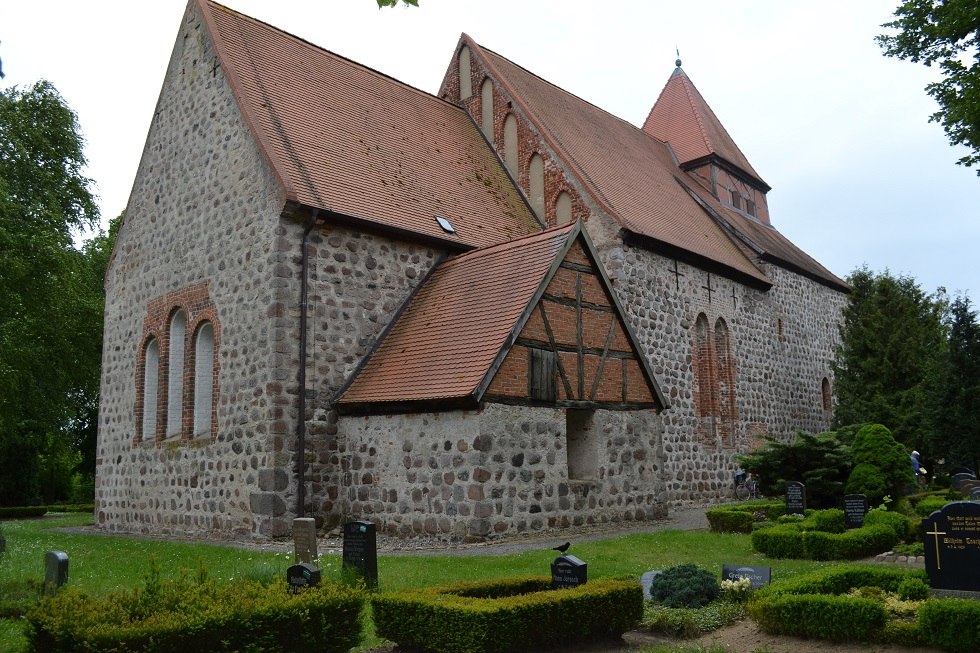Sanitz church is built in the style of transition from Romanesque to Gothic from field stones, the corners and edges of which were formed from hewn stones.
Sanitz is mentioned as a church village as early as 1256. The reason for the documentary evidence was the assignment of the church in Dänschenburg as a Sanitz daughter church. The church Sanitz was mentioned again on the occasion of a contract of June 2, 1291, in which Heinrich von Werle secured the patronage right to the bishop of Schwerin over his ward Nikolaus von Rostock, which was held by the sovereign since then. Various families were recorded as vassals in the 14th century. Through succession, the village came into the possession of Doberan Monastery, to which it belonged until the Reformation.
The altar from 1811 is a work in the classicist style with paintings by the Mecklenburg court painter Rudolph Suhrlandt, which show the Holy Communion in the base and the Passion of Christ on the Mount of Olives in the top. To the right and left of each are two columns with Corinthian capitals and figures carved from wood, representing faith, love, hope and patience. The altar was donated by Captain von Koppelow from Reppelin. The pulpit from 1694 is made in Baroque style.



















